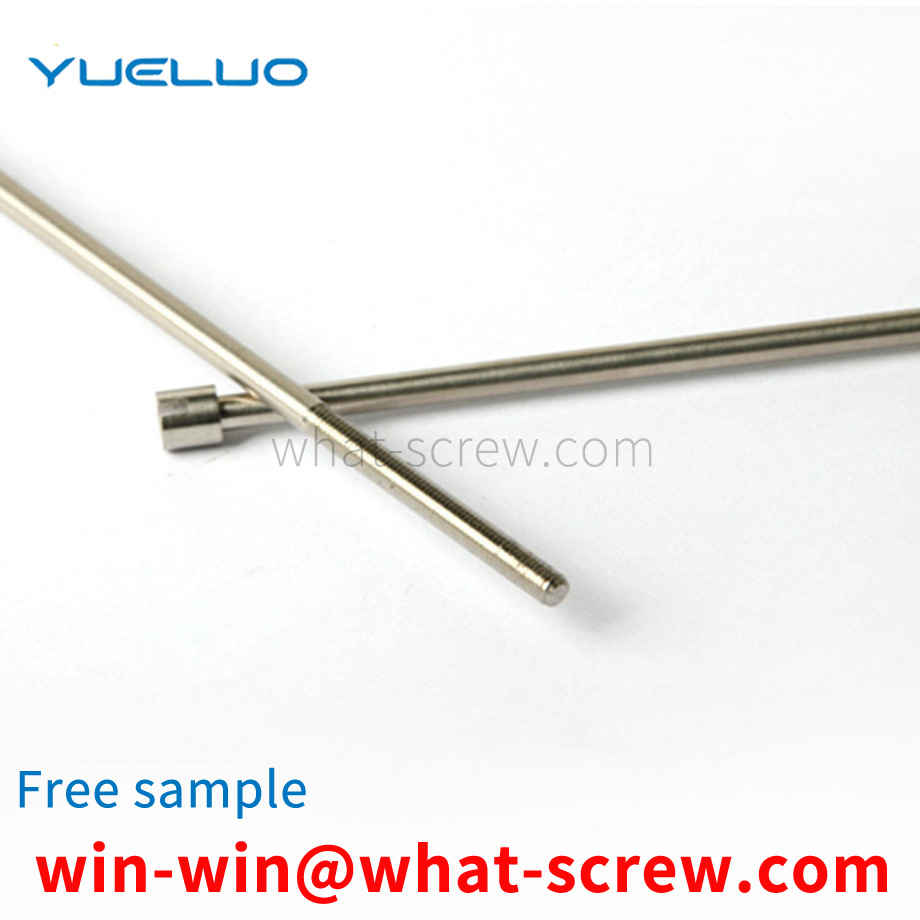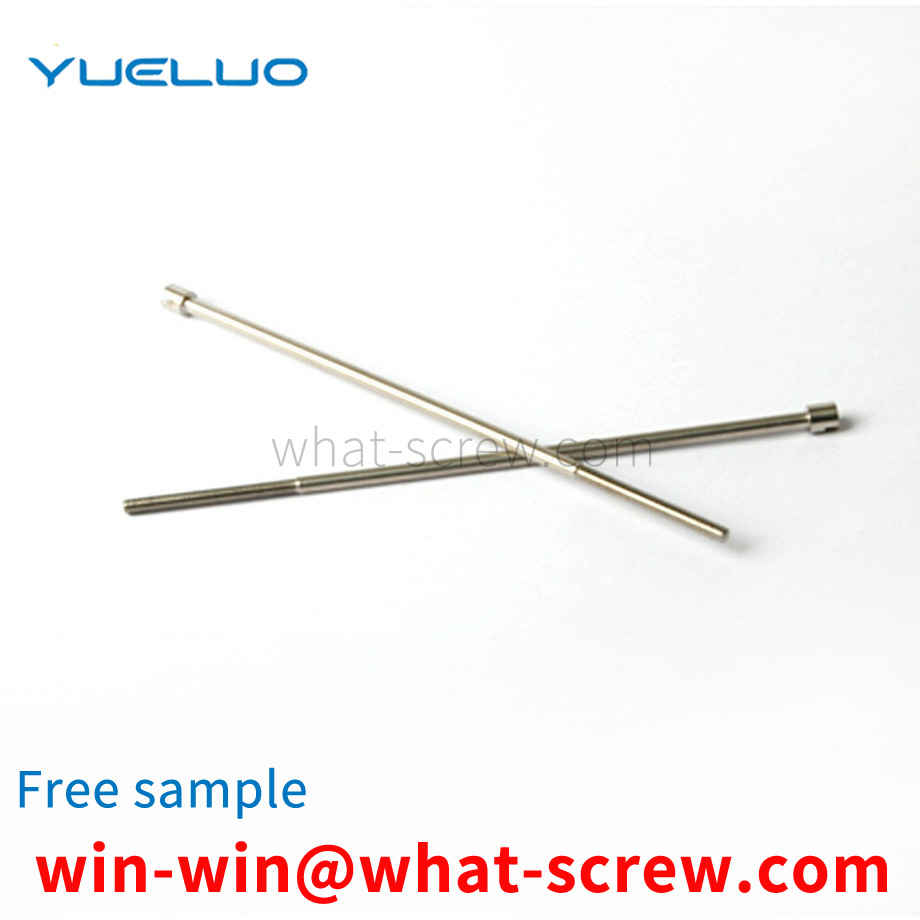High-strength fasteners must be quenched and tempered according to technical requirements. The purpose of heat treatment and tempering is to improve the comprehensive mechanical properties of fasteners to meet the specified tensile strength value and yield ratio of the product. The heat treatment process has a crucial impact on high-strength fasteners, especially its intrinsic quality. Therefore, in order to produce high-quality high-strength fasteners, advanced heat treatment technology and equipment must be available. Due to the large production volume and low price of high-strength bolts, and the threaded part is a relatively fine and relatively precise structure, the heat treatment equipment is required to have large production capacity, high degree of automation, and good heat treatment quality. Since the 1990s, the continuous heat treatment production line with protective atmosphere has dominated, and the shock bottom type and mesh belt furnace are especially suitable for heat treatment and tempering of small and medium-sized fasteners. In addition to the good sealing performance of the furnace, the quenching and tempering line also has advanced computer control of atmosphere, temperature and process parameters, equipment failure alarm and display functions. High-strength fasteners are automatically controlled and operated from feeding-cleaning-heating-quenching-cleaning-tempering-coloring to offline, which effectively ensures the quality of heat treatment. The decarburization of the thread will cause the fastener to trip before the resistance required by the mechanical properties is reached, which will cause the failure of the threaded fastener and shorten the service life. Due to the decarburization of the raw material, if the annealing is improper, the decarburized layer of the raw material will be deepened. In the process of quenching and tempering heat treatment, some oxidizing gas is generally brought in from outside the furnace. The rust of the bar wire or the residue on the surface of the wire rod after cold drawing will also decompose after being heated in the furnace, and some oxidizing gases will be generated by the reaction. For example, the surface rust of steel wire, which is composed of iron carbonate and hydroxide, will be decomposed into CO₂ and H₂O after heating, thus aggravating decarburization. Studies have shown that the degree of decarburization of medium carbon alloy steel is more serious than that of carbon steel, and the fastest decarburization temperature is between 700 and 800 degrees Celsius. Because the attachments on the surface of the steel wire decompose and synthesize carbon dioxide and water very quickly under certain conditions, if the furnace gas of the continuous mesh belt furnace is not properly controlled, it will also cause excessive decarburization of the screw. When the high-strength bolt is formed by cold heading, the raw material and the annealed decarburized layer not only still exist, but also are extruded to the top of the thread. For the surface of the fastener that needs to be quenched, the required hardness cannot be obtained. Its mechanical properties (especially strength and wear resistance) decreased. In addition, the surface of the steel wire is decarburized, and the surface layer and the internal structure have different expansion coefficients, and surface cracks may occur during quenching. For this reason, during quenching and heating, the top of the thread should be protected from decarburization, and the fasteners whose raw materials have been decarburized should be properly carbonized, and the advantages of the protective atmosphere in the mesh belt furnace should be adjusted to the original carbon-coated parts. The carbon content is basically the same, so that the decarburized fasteners are slowly restored to the original carbon content. The carbon potential is preferably set at 0.42% - 0.48%. The carbon coating temperature is the same as the quenching heating, and cannot be carried out at high temperatures , so as to avoid coarse grains and affect mechanical properties. The quality problems that may occur in the process of quenching and tempering of fasteners mainly include: insufficient hardness in the quenched state; uneven hardness in the quenched state; excessive quenching deformation; quenching cracking. Such problems in the field are often related to raw materials, quenching heating and quenching cooling. Correctly formulating the heat treatment process and standardizing the production operation process can often avoid such quality accidents.
1. Fixed anchor bolts, also known as short anchor bolts, are poured together with the foundation and used to fix equipment without strong vibration and impact. 2. The movable anchor bolt, also known as the long anchor bolt, is a detachable anchor bolt used for fixing heavy machinery and equipment with strong vibration and impact. 3. Expansion anchor bolts are often used to fix stationary simple equipment or auxiliary equipment. The installation of expansion anchor bolts should meet the following requirements: the distance from the center of the bolt to the edge of the foundation shall not be less than 7 times the diameter of the expansion anchor bolt; the foundation strength of the expansion anchor bolt shall not be less than 10MPa; there shall be no cracks in the drilling holes. The drill bit collides with the steel bars and buried pipes in the foundation; the diameter and depth of the drill hole should match the expansion anchor bolts. 4. The bonding anchor bolt is a kind of anchor bolt commonly used in recent years, and its method and requirements are the same as the expansion anchor anchor bolt. However, when bonding, pay attention to blowing out the debris in the hole, and do not get wet. [1]
Sometimes, the iron screws are often seen broken, and sometimes, the stainless steel screws are also seen broken. But generally speaking, stainless steel screws rarely break. Because the stainless steel screw wire itself is relatively hard. But under certain circumstances, stainless steel screws can still break. So what are the main reasons for stainless steel screws to break? The reasons for the fracture of stainless steel screws are as follows: 1. The quality of raw materials used for stainless steel screws is poor, and the quality of stainless steel screws is not good. There are many impurities, impure, resulting in insufficient hardness of stainless steel screws. 2. The production process of stainless steel screws. For example, stainless steel screws with eccentric head and eccentricity, and the Q value is too deep and the R position design is too small during the down punching operation during production. 3. The customer uses too much force when using stainless steel screws. Generally, you do a torque test to see how much the minimum breaking force is, and then adjust the torque. Of course, stainless steel screws must be broken for more than three reasons. But the above three reasons are the main reasons for the fracture of stainless steel screws. When the stainless steel screw is found to be broken, it can be checked step by step. Find out what's causing it.
Moisture-proof measures Iron screws are easy to rust in a humid environment. In order to prevent the screws from rusting, the screws need to be moisture-proof and moisture-proof. The moisture-proof and moisture-proof methods of screws are as follows: (1) Vibration machinery, try to use solvent-free paint. (2) It is best to use impregnating paints that do not contain oxidative components, such as epoxy-urethane (Epoxy-urethane)-based or unmodified epoxy-based (Epoxy-)-based impregnating paints. (3) When using melamine alkyd impregnating paint, the curing temperature and curing time should be adjusted. The curing temperature should be slightly higher than 130 °C (such as 135 °C) and the curing time should be longer than 180min, and the process must be strictly implemented, especially In the hot and humid season, the drying (curing) time of the paint specified in the paint factory's samples is not necessarily sufficient from the perspective of rust prevention, and the motor has a specific inner shape. (4), use paint without volatile acid. (5) Choose paint with good hydrolysis resistance.
A kind of screw provided by Yueluo, the rod body of the screw rod has a thread segment, and the two ends of the thread segment are respectively provided with annular and two convex rings. The nominal size of the thread segment, and the distance from the convex ring at the rear end of the screw in the screwing direction to the rod core is greater than the nominal size of the thread segment.
We have many years of experience in the production and sales of screws, nuts, flat washers, etc. The main products are: locking hexagon nut, pressed willow CLS, half-threaded screw nut, sheep's eye bolt and other products, we can provide you with suitable products for you Fastener Solutions.



















 Service Hotline
Service Hotline




